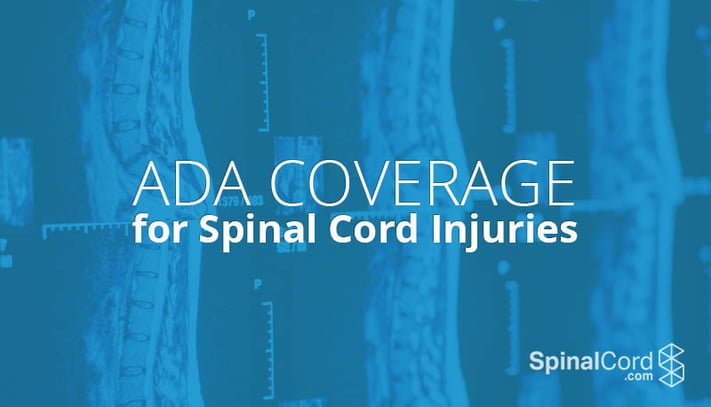ADA Coverage for Spinal Cord Injuries

Just a few decades ago, the law’s protection of people with spinal cord injuries was anything but clear. A hodgepodge of state, local, and federal laws offered some assurance, but the protections to which you were entitled often depended on where you were located and who committed the discrimination.
The Americans With Disabilities Act (ADA) changed all that. This federal law, which went into effect in 1990, prohibits most forms of discrimination against people with disabilities.
There is ADA coverage for spinal cord injuries even though the law doesn't specifically outline what constitutes a disability. Instead, a disability is defined as any impairment that interferes with a major life function. This includes spinal cord and head injuries, as well as some of the conditions that often go hand-in-hand with these disorders, such as depression, chronic pain, and mobility impairments.
Employment Discrimination
Title I of the ADA prohibits government entities and labor unions from discriminating on the basis of disability. Discrimination includes refusing to hire you because of your disability, requiring you to disclose information about your disability, or requiring you to perform needless job duties made impossible by your disability. For instance, a nurse who was required to lift 50 pounds each day might be the victim of disability discrimination.
Title III prevents employers who offer “public accommodations” from engaging in discrimination, either by refusing to hire you or by making your job impossible for you to perform. Private employers who offer public accommodations include banks, restaurants, retail stores, and most other businesses that cater to the public.
The ADA does not require your employer to undermine work standards or to significantly change the nature of the job. For instance, a ballet dancer with a spinal cord injury would not be able to continue working; nor would a body-builder. But if the tasks made difficult by your disability are not integral to your job, your employer is required to make “reasonable accommodations,” in addition to avoiding any form of overt or covert discrimination.
Educational Discrimination
Educational institutions which accept public funding—which effectively includes all colleges and universities, except for a handful of unaccredited schools—are prohibited from engaging in disability discrimination. This means they can't refuse to accept you, fail you from a class, or decline to allow you to participate in discussions because of your disability.
Additionally, institutions of higher learning must offer reasonable disability accommodations. What counts as “reasonable” depends on a number of factors, most notably the nature of the course. Reasonable accommodations cannot fundamentally alter the nature of the course. For instance, a college dance course likely couldn't offer an accommodation requiring you not to dance, but could permit you to dance in your wheelchair, or only learn some maneuvers.
At most colleges and universities, a disability services office oversees disability accommodations, and this should be your first stop if you're ready to begin the process of pursuing accommodations.
Public and Private Accommodations
All private entities are required to follow the ADA if they offer public accommodations. This includes most businesses that serve the general public. Under the ADA, these businesses must not discriminate in employment decisions, and may not discriminate against customers or visitors on the basis of disability status. In addition, these entities must make reasonable accommodations for their facilities to be accessible, such as installing a ramp or elevator for wheelchair access.
Subscribe to our blog to get regular updates on news and research impacting the SCI community.
Stay Updated on Advancements On Traumatic Brain &
Spinal Cord Injuries
About the Author




